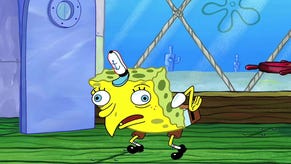How to play Draft in Magic: The Gathering
Learn about MTG’s Draft format, how to play and the best way to build your deck.
Drafting is one of the best ways to play Magic: The Gathering. The format has a completely different feel to the kind of MTG you’ll typically play thanks to its innately chaotic nature, and the types of mind games that factor into every decision make for an intense and enjoyable experience. It’s also one of the best ways to experience a new set, which makes it perfect for release events or reliving older expansions you never had a chance to mess around with.
In order to play Draft, you do need to know a bit about it: not just what drafting is, but what to look out for when drafting and how you can become better by learning some advanced techniques. It’s not as daunting as it sounds - and once you know how to draft in MTG, you’ll never want to stop.
- What is the Draft format?: Learn about Limited Draft, and what makes it one of MTG's most popular formats.
- How to draft in MTG: Pop open those booster packs as we teach you how to draft.
- How to get better at drafting in MTG: Knowing how to draft is half the challenge - now it's time to perfect you technique with some top tips.
- How to make a Draft deck in MTG: Put that knowledge into practice as we make a deck using those drafted cards.
What is the Draft format?
Drafting is a limited format of Magic: The Gathering. In short: instead of building a deck ahead of time, you construct one from cards you get during the event itself by opening booster packs.
That means that nobody enters with better cards than anyone else, which makes Draft one of the cheapest competitive formats around. You don’t have to spend hundreds of pounds on a viable deck - you’ve just got to pay for entry to the event, or three booster packs (around £10) if you’re playing more casually.
How to draft in MTG
Now then, let’s get drafting. Ideally, Draft is played with a group of eight players. Each player starts with three booster packs in front of them. Normally these will all be from the same set, but there is an alternative format called Chaos Draft where everyone has booster packs from different sets to make things even more interesting.
To start off, everyone has to open their first booster, pick a card and then pass the remaining cards to the player on their left. As a result, you’ll be handed a pack of cards (minus one) from your right. You continue to do this until the entire pack is gone. Once the first booster is done, you repeat the process with the second pack, but you pass to your right this time. Finally, you open the third pack and pass to your left once more.
You’ll be unable to look at the cards you’ve picked unless you’re in-between packs. That means you need to keep track of the cards you’ve chosen. We’ll get more into that in a minute, but it’s important to know. Also, in a competitive event, you’ll be doing all of this with a time limit, and you get less and less time to pick each card the further into each pack you get. This keeps proceedings moving, but also forces the more indecisive among us to choose a card under pressure.
Once you’ve finished actually drafting, you’ll have to build your deck. To do this, you can use any number of basic lands and any of the cards you drafted. The only rule is that you have to have at least 40 cards in your deck. Any cards you choose not to include in the main deck can be in your sideboard, which allows you to keep more specialised cards out of your main game plan and use them for emergencies if they’re good against a particular strategy an opponent is using.
How to get better at drafting in MTG
Right then, that’s all of the basics covered, so let’s dig into some extra advice. Each of these tips can be taken on their own to help improve your drafting game in general - if you can master all of them, you’ll be in with an excellent chance of winning every draft you play in.
Don’t always play your rares
A lot of MTG players will want to build their deck around the rares or mythic rares they open up in each pack. Sometimes that’s a great idea because playing that one card will single-handedly win you the game. Unfortunately, though, sometimes it also ends up either being not very good or only useful in certain circumstances. In those cases, you’re better off either not picking it, or picking it and not using it.
There are plenty of excellent Draft decks that don’t end up using rares at all, and instead opt for a solid base of both common and uncommon cards. These often end up in the hands of people who are good at learning when a mana colour is open. “What does open mean?” we hear you ask. Well, let’s get to that now.
What does “open” mean?
In Draft, “open” is a term used to describe when specific mana colours keep being passed to you. Basically, if you keep getting Green cards from your left, it’s very likely that nobody on that side of you is playing the colour Green, which means you’ll have a better chance of picking up stronger cards in that colour.
The colours that are open may change throughout a draft but, given that most draft decks are two colours, you can simply adjust accordingly. This is probably the hardest thing to learn when getting started with Draft, because you’ll naturally want to build around your first couple of picks. However, being flexible will often allow you to build a better draft deck - and that gives you a far higher chance of winning.
Removal is key
This is a big one, and probably the thing that will help improve your Draft technique the most. In order to survive any of the battles you’re about to face in a draft, you need to be able to deal with opposing threats. More often than not, these threats will be creatures. That means you need spells that either deal damage to, destroy or exile creatures - otherwise known as removal.
Sometimes these will be instants and sorceries, and sometimes it’ll be an enchantment that taps a creature to put it out of action. There’s nearly always a small White creature that taps other creatures too - never underestimate how powerful that can be in the right deck. Of course, you need more than removal to win a game...
Have threats as well as answers
You need a good selection of your own threats, too. Depending on which cards have been passed to you, sometimes it’s better to have a couple of big threats that are hard to deal with and other times it’s better to have an army of two-mana 2/2s to send into battle.
The important thing is that you keep track of the cards you’re picking, because if you go too heavily into creatures - or too heavily into everything else - you’ll likely end up with a deck that isn’t going to win anything, even if all the individual cards in it are great.
Master the mana curve
On top of the cards you choose, you need to keep in mind the colours of said cards and their mana cost. You need to actually be able to play the cards you’ve chosen, so picking the best card in every colour isn’t going to help. Likewise, if every card you’ve picked is five mana, you’re going to spend the first four turns of each match wondering what you’ve done to deserve such a fate.
Generally speaking, you want to stick to two mana colours at most. Sometimes you’ll get lucky and end up with ways of fixing your mana, like tri-coloured lands or an artifact that can generate mana of any colour, but, even then, you should only have one or two cards in that third colour.
In terms of mana cost, you need to be able to cast your spells. It’s often better to have a lot of low-cost cards than a lot of more mana-intensive ones. The mana curve is generally bell-shaped, with a few one-mana cards, then more two- to four-mana cards before going back down again once you get above that. You can have a couple of cards that cost over five mana, but they need to be very powerful to be worth it. This all leads into our last point: how to actually build your Draft deck.
How to make a Draft deck in MTG
Building your deck in Draft is a lot like building a normal MTG deck. Ideally, you should have some kind of game plan in mind. That means knowing if you’re going to be playing aggressively or attempting to play a control deck aimed at manipulating your opponent’s cards. Depending on which style of play your selection of cards suit, you’ll want a different number of land cards.
For a control deck, you’ll be looking at around 18 lands in your 40-card deck. If you’re playing an army of small creatures, you’ll likely only need 15. It’s also worth always sticking to the 40-card minimum because then you have a far higher chance of pulling out your best cards during each game.
Aside from making your deck as strong as possible, the most important thing is to have fun - although beating your friends in every match can certainly help with that.









